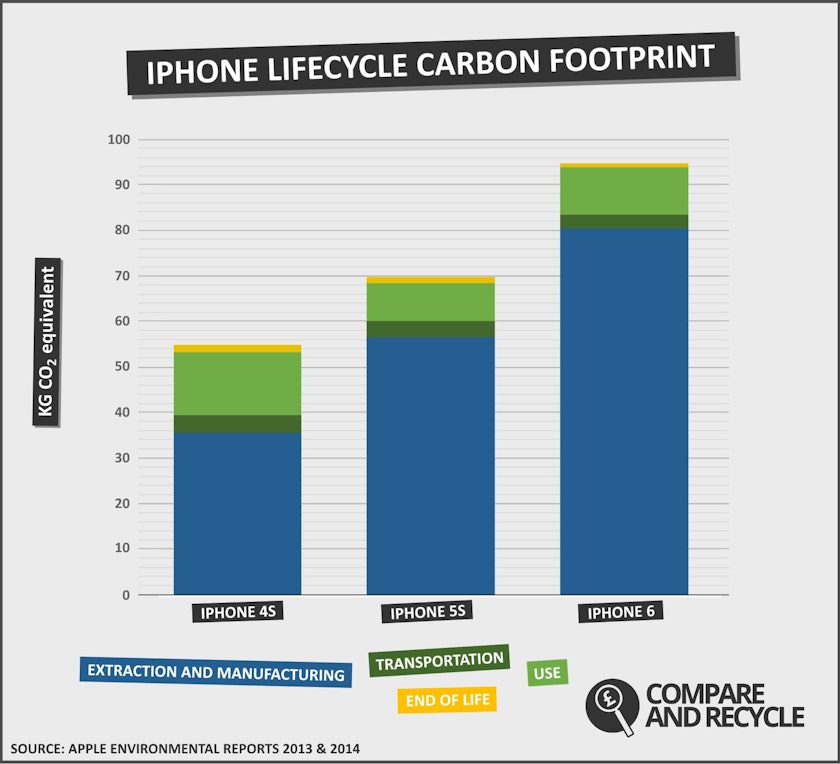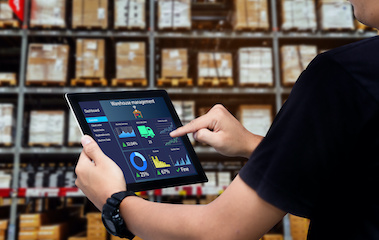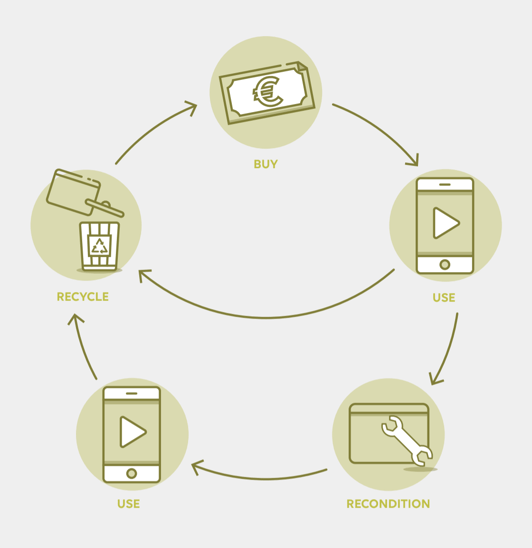How to Practice Digital Responsibility for a Greener Future
While digital technology makes our daily lives easier, we are becoming increasingly aware of the negative effects it can have on the environment and greenhouse gas emissions. According to figures from the Shift Project, our use of digital technology accounts for between 3-4% of the world's greenhouse gas emissions, and this figure is expected to increase in the coming years. This is why Wifirst has been looking into the issue and started drawing up its carbon footprint.
What is digital responsibility?
Digital responsibility is a strategy for continuous improvement that aims to reduce the environmental and social footprint of digital technology. It involves harnessing tools of digital transformations, such as enhanced connectivity and the Internet of Things (IoT), to improve the environment and support sustainable business operations. According to the Sustainable Digital Technology and Services Strategic Approach from the UK's Strategic Command report, for digital responsibility to succeed on a global scale, it is especially important that digital systems are designed, manufactured, managed in a way that minimise environmental and social impact with contributions towards sustainable development.
If done correctly, digital technology is expected to cut carbon emissions on a global scale with the development of next-generation grids, smarter cities, transportation systems and industrial processes. On a personal scale, however, there are also actions you can partake in to be digitally responsible. Here are 12 easy eco-gestures you can apply to your daily life:
01. Choose a less power-hungry connection
Favour a WiFi connection and disable the GPS, Bluetooth and 4G/5G connection on phones and tablets, which consumes 50-60% more energy than WiFi. In this respect, Wifirst stands out from its competitors. While an individual WiFi box generates 36.6kg of CO2 per year per home, Wifirst's "as a service" shared approach consumes only 2.4kg of CO2.
LEARN MORE ABOUT OUR CARBON FOOTPRINT
02. Dare to use a sustainable search engine

Did you know that making one Google search can generate the equivalent of up to 10g of CO2, or that providing one user with one month of Google services generates about the same amount of greenhouse gas emissions as driving a car for one mile? Why not opt for a sustainable search engine? They balance their impact by donating part of their revenue to environmental, social and solidarity projects. Ecosia, for example, uses ad revenue from your searches to plant trees!
03. Search in a more eco-responsible way
- Go directly to the website. The most practical way to do this would be to bookmark the websites you visit most often, or type the URL address directly to the search bar.
- Go straight to the point- do a precise search with precise keywords.
- Use the arrows in the address bar ("previous"/"next"), which saves reloading pages.
- Block flash animations on your browser, which consume a lot of energy!
- Use WiFi rather than 4G as much as possible! And turn off 4G as soon as you've finished your task, which avoids constant data transfers and therefore bandwidth congestion.
CHECK OUT CLEAFOX'S 2021 REPORT
f you're interested in learning more about different ways you can be more eco-friendly on the Internet, check out Cleafox's report from 2021 here.
04. Keep it light
We are used to communicating with our clients and colleagues by email, but perhaps not in the most eco-friendly way. Here are some recommendations:
- Send light messages: delete or limit attachments (forget about exchanging dancing cat videos)
- Optimise the size of files sent (compressed files, low-resolution images and PDFs, etc.)
- Use temporary drop-off sites rather than sending attachments, like DropBox or the Cloud.
05. Clean up your email inbox regularly
It might not be something you think about when it comes to digital responsibility, but it can make a huge difference! Stop using the "I'm keeping this email, you never know" excuse, because your emails are stored in data centres that continuously keep working to keep everything! To avoid this, the steps are simple:
- Delete your old emails
- Delete the attachments from the message you are replying to
- Empty your trash and spam regularly
- Unsubscribe from newsletters that you no longer read.
06. Avoid streaming
Streaming is very hurtful for the environment! Maybe try downloading your videos on your computer, or skip video clips when you are watching a video online. Think about reducing its resolution and especially, stream on a WiFi connection and not on 4G! According to The Global Internet Phenomena Report by Sandvine, video streaming share of Internet bandwidth is 60%, with Netflix alone taking up 12% of Internet bandwidth.
07. Choose second-hand equipment
Favour refurbished or second-hand equipment. The savings are substantial: 60 to 80% cheaper than brand new! Not only do you save money, but you also hurt the environment a little less.
This is a great way to participate in the circular economy model!
08. Extend the life of your devices
Protect your devices to avoid damages. This can be done by using a computer cover or a case and tempered glass for a smartphone; take care of your battery, by favouring "energy-saving" mode, using original cables and by not letting it charge all night. According to a report done by the University of Edinburgh Department for Social Responsibility and Sustainability, by extending the lifetime of a single computer and monitor from four years to six years, approximately 190 kgCO2e of carbon emissions are avoided. It is even more sustainable, if looking at carbon emissions alone, to keep a used computer for longer than it is to upgrade to a newer, energy-efficient model.
09. Go for eco-designed equipment
If you cannot buy refurbished or second-hand equipment, use eco-designed technologies. Eco-labels are available to help you choose the most environmentally friendly products. With indications of its repairability index, you'll be able to identify products that are easier to dismantle and repair, helping the longevity of the product.
10. Recycle your devices
The UK hoards an astonishing amount. According to eBay, a whopping £48 billion worth of belongings are being stored in people's homes. Decluttering and trying to sell your old devices, could be the answer for some quick cash- and not to mention a better move for the environment. You can drop off your devices in a dedicated recycling collection bin (following the government guidelines), get them collected from your house, donate them to charity, or trade/ sell them on a dedicated platform (like eBay, CeX, Facebook Marketplace).
CHECK OUT Clear it Waste
11. Limit the number of devices
Some of us have two phones, a business and a personal one. The best thing to do is to choose a smartphone with a dual sim slot, which avoids the need for two phones. Having multiple phones will increase your carbon footprint! The manufacturing of a phone- from the extraction of the minerals to the final assembly- accounts for 90% of the devices' carbon footprint. If you'd like to learn more about how companies like Apple are working towards digital responsibility, check out their 2020 report here.

12. Switch off at night
Unplug your appliances when you are not using them! Turning off the power switch of your WiFi box and TV receiver as often as possible can save 23% on your electricity bill each year and in part, create a smaller carbon footprint. According to British Gas, 41% of people admit to only switching off occasionally, whilst 16% were unaware that unused electronics still consumed energy!
Wifirst's commitment
At Wifirst, we are always looking for ways to lead innovation in the telecommunication industry. We are committed to integrating digital responsibility into our growth plan, by integrating competitiveness, innovation, regulatory compliance, social and environmental responsibility, as well as sustainable strategies. We will continue to conduct carbon assessments to identify and measure major areas of CO2 emission in order to reduce our impact and that of our customers.
Connectivity must be considered as a resource to be pooled, to be shared, in order for there to be controlled energy consumption and optimised quality of service.
- Wifi (36)
- Hotel Industry (18)
- Digital Workplace (13)
- Behind the scenes (8)
- IPTV - Signage (8)
- Optical fibre (7)
- Green-IT (5)
- Retail (5)
- Education (3)
- Healthcare (2)
- Cybersecurity (1)
- General (1)
- Hospitality (1)
- PBSA (1)
- Student Accommodation (1)
- Telephony (1)
- Tips and tricks (1)
- Tourism (1)
- Wifirst (1)
You May Also Like
These Related Stories

Your new Digital Workplace for the Fourth Industrial Revolution

Older people increasingly connected to the Internet? It’s happening!

